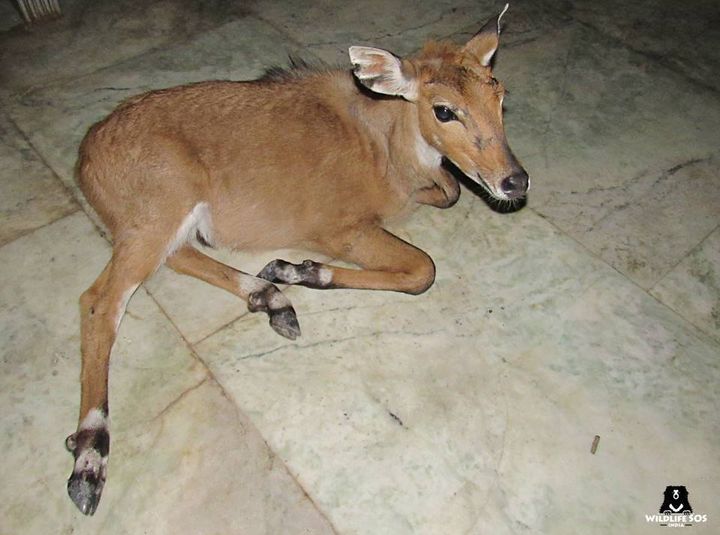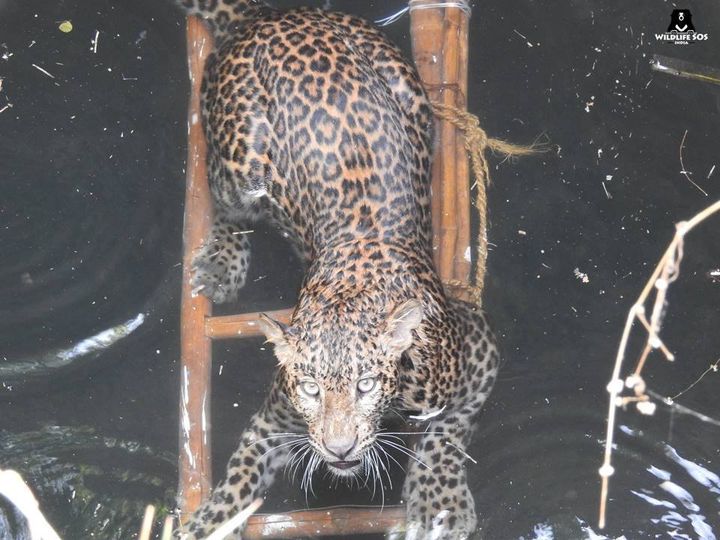As the planet’s population approaches 8 billion, human encroachment is affecting even the world’s wildest places. Not surprisingly, human-wildlife conflicts, which range from crop-raiding and property damage to human and wildlife fatalities, are on the rise. Earth’s remaining wildlife populations are being forced to find a way to live with homo sapiens — a species not exactly defined for our ability to coexist harmoniously with others. In some areas, certain species are having to dramatically change their activity patterns by becoming more active after dark to reduce contact with people. However, very few species can successfully make this behavioral shift — and it only goes so far if they can. Unless humans or wildlife completely disappear from the planet, human-wildlife conflicts will continue to exist, and will likely continue to increase.
So what can we do? While many organizations, including Wildlife SOS, are actively researching ways to mitigate these conflicts, successful coexistence between people and wildlife is going to require more than a clinical approach. Without some empathy for our fellow earthlings, some willingness on our part to make room for other species, the human race will soon crowd out all life forms other than those we raise to serve us in some capacity or those that flourish in urban environments. A shift in thinking is going to be necessary. Can we be the ones to adapt? Can we make the effort to allow other creatures to exist even if it occasionally inconveniences us? Cynics might say it’s unlikely, but we present a few stories below to suggest that it’s indeed possible.

A nilgai antelope fawn stranded in a residential portion of Faridabad, India.
The Leopards of Maharashtra: In Junnar, Maharashtra (on India’s west coast), human-leopard conflicts have risen to an all-time high. The base cause of these conflicts is wide-scale habitat change — namely, deforestation and river damming to turn valleys into sugarcane fields. As a result, leopards have had no choice but to use these fields to birth their young and feed on domestic animals. Predictably enough, leopard attacks on humans have also been on the rise. However, instead of lashing out, locals worked with Wildlife SOS on ways to reduce conflict. They formed a working group with Wildlife SOS to rescue leopards that have fallen into wells, and to reunite cubs with their mothers (a practice that not only helps leopards but protects people as well; anxiety-ridden mother leopards often attack people while searching for their missing offspring). The group is also helping to implement new ways to protect both people and livestock.

Wildlife SOS worked with locals to rescue this leopard after it fell into an open well in a populous area.
An Unusual Response to a Sloth Bear Attack in Royal Chitwan National Park: A young Croatian named Tea was hiking through Nepal’s Royal Chitwan National Park when a sloth bear suddenly charged through the elephant grass and attacked her. Even though a hiking guide chased the bear off after just a few seconds, Tea was left with a broken arm that the bear had bitten and was bleeding profusely from deep gashes in her sides. Tea’s boyfriend carried her through the jungle as she bled, and they eventually made their way to a Nepalese hospital where she had to undergo immediate surgery. If any major arteries had been hit, Tea’s injuries could have been fatal — but she recovered quickly and almost immediately Tea contacted Wildlife SOS with questions about the bear species and why she had been attacked. And just as soon as she recovered, Tea actually came to our sloth bear sanctuary in Agra, wanting to know how she’d react when surrounded by members of the very species that had attacked her. Her curiosity transformed into respect and understanding; Tea is now working to help conserve these misunderstood mammals.

Tea Pavlek recovers in a Nepalese hospital after being mauled by a wild sloth bear.
A Wild Elephant Herd Unexpectedly Moves into an Inhabited Area: Everyone loves elephants. But many of us don’t fully grasp how dangerous wild ones can be. And though elephants are considered sacred in the Hindu religion, and Indians have much more tolerance for wildlife than Westerners in general, wild elephants can actually be considered pests in parts of India. Recently, a herd of wild elephants moved into an area of Chhattisgarh that has not seen these animals in more than 40 years. (Members of the herd were likely displaced from another region by mining activities.) The portion of Chhattisgarh in which this herd now resides is far from ideal; it is fragmented by farmlands and pockmarked with environmental disturbances. And there is now a great deal of human-elephant conflict: the elephants damage and feed on the crops, and several people have even been killed trying to chase the bull elephants away. Even still, the local people are working with the Indian government and Wildlife SOS to protect the elephants while keeping villagers safe. While it looks like good news at the outset, the outcome of this particular situation is still in question. Wildlife SOS will continue working with local people and the government to resolve this problem for the long term.

A herd of wild elephants has moved into a populated area in Chhattisgarh, India, putting themselves and the local people at serious risk.
These three stories make one thing clear: wild animals want the same things we want — a chance to live their lives. But with unbridled human expansion and the associated effects on habitat, it’s getting harder and harder for wildlife to avoid people. For the moment, we still share this planet with a variety of organisms large and small, many of which have been around far longer than we have, and all of which have just as much a claim to existence as we do.
There is a choice to be made. Will we let resource hoarding and intolerance rule the day? Or can we make a bit of room for other life forms on this planet?
